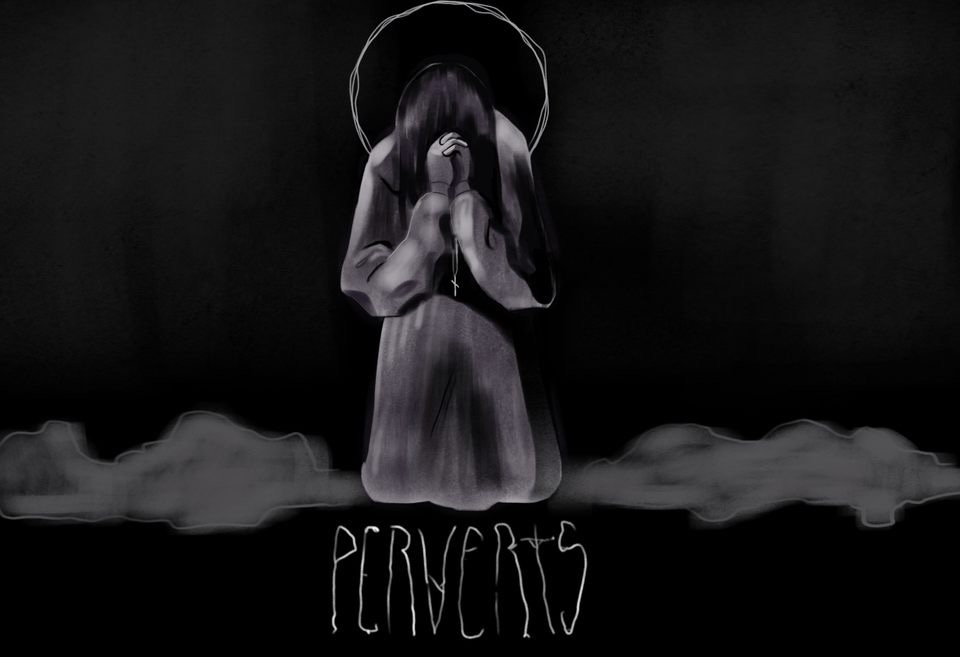I turned to my friends as the credits rolled down the screen, utter shock still smeared across my face.
The man in front of me stood up and joined in silence with my friends and me as we collectively gathered ourselves to exit the movie theater that just tore us open, chewed us up and spit us out.
“The Substance” hit theaters internationally Sept. 20, after being awarded Best Screenplay at the Cannes Film Festival.
The film was directed by Coralie Fargeat, a French film director and screenwriter. It stars Demi Moore as Elizabeth Sparkle and Margaret Qualley as Sue, a younger, more vibrant and seductive version of Elizabeth.
The story follows Sparkle as she internally and externally battles with aging in the film and media industries. When it seems like her life’s falling apart from all angles, a solution is presented: “the substance.”
The substance duplicates all of the cells in Sparkle’s body, creating Sue, the only difference being that this new version comprises everything she misses about youthfulness.
There is only one inhibiting rule when it comes to the substance: you must switch bodies every seven days. Half of Moore’s time must be spent as Sparkle, the other half as Sue.
Over time, Sue misuses the substance in order to remain conscious for longer periods of time, causing Sparkle to age rapidly. The aging progressively intensifies, going from wilting skin to graying hair and, eventually, extremely saggy breasts.
Sue, however, does not care. She is the new star of a dance workout morning show and spends her days basking in the glory of fame.
While this movie falls under the category of body horror, it brings much more to the table. Not only is it seeping with feminist motifs, but the film also strikes a societal chord that goes unplayed often: aging.
It delves into the societal belief that women have an expiration date, the idea that when women lose sex appeal, they can not stand alone on their education, character or experience.
The exaggerated, yet recognizable, setting of Hollywood shapes the perception of the story for the viewer. It makes room for the realization that society doesn’t treat aging women well, in or out of the spotlight of the media.
“[The setting] is just a way to symbolize what I think every woman has to face in her own life, and that happens everywhere,” said Fargeat in a Sept. 20 interview with NPR.
The notion of aging women’s disposable nature is loud and proud throughout this movie. The pervasive feeling is exemplified in Sparkle’s belief that she herself is nothing without Sue.
Sue is a self-destructive extension of Sparkle, in the literal sense, and even when Sparkle has aged beyond recognition or human reality, she is unable to part ways with Sue.
I felt helpless alongside Sparkle. I could feel her struggling with the question of how she could break down these societal notions inside of her while seeing the real life implications play out in front of her eyes.
“I definitely can see some of my mom’s experiences,” said junior Lily Rapuano.
Rapuano felt that even if the movie didn’t feel applicable to her at this time in her life, the themes rang through.
“I think the lack of subtlety is really strong,” said Rapuano.
Fargeat’s choice to ignore metaphorical interpretations and lean into candid reality may be seen as lazy or unrealistic. But interpreting her choice that way misses the point of view from which the movie is filmed.
Seeing on the screen what one experiences in real life without smoothing the edges is validating. You see Sparkle’s anger. She doesn’t take a therapeutic approach to her life problems and she doesn’t have a false sense of calmness.
Sparkle carries her frustration with her circumstances and her inability to let go of others perceptions of her unconcealed.
While Sparkle is left aging in the dark cavernous corners of her home, the viewer watches Sue delving into her new career, which includes shaking her butt while close-up shots are taken from every angle.
Some people may say these shots are unnecessary, too frequent or even inappropriate with one Letterboxd reviewer, Adam Nayman on Sept. 21, stating, “the only people it [the film] has less respect for than its characters are the people in the audience.”
However, I think they capture the essence of a young woman’s experience: the empowerment of taking ownership of your body while also grappling with the reality of its commodification.
I question whether the disrespect this reviewer felt as an audience member stems from Qualley’s character or Moore’s full-frontal nudity scene. In either case, I’m glad they found themselves in a theater with this movie on the screen.
The Letterboxd reviewer clearly missed the point of the film, but that’s the beauty of it. Even in the absence of any sense of subtlety, some people still don’t get it.
In this way, I feel like Fargeat and I have an inside joke. It makes the film even more personal.
Overall, Fargeat’s ability to seamlessly shift from grotesque to emotive is nothing short of magical. This film’s entertainment factor matches its introspective elements, something I feel is largely missing in the media today.
This film is for the strong-stomached and open-minded folks, but I can promise you one thing: it will be hard to look away.




















